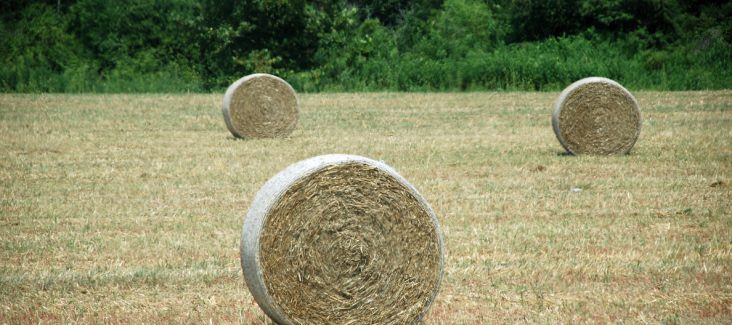Hay production drops to its lowest level in 11 years
by February 6, 2023 8:32 am 1,235 views

Fertilizer prices and drought last year decimated hay production in the United States. The country had its biggest decline in 11 years with stocks at their lowest level since data collection began, according to the National Agricultural Statistics Service (NASS).
The Natural State didn’t fare much better.
Arkansas farmers harvested 1.09 million hay acres last year, an 8% decline when compared to the previous year. Those acres yielded two tons per acre, a 10% yearly drop in yield. About 2.19 million tons of hay was produced, a 16% drop.
Despite the decline, James Mitchell, extension economist for the University of Arkansas System Division of Agriculture, said he expected it to be worse.
“USDA’s estimate for Arkansas is much better than what I would have predicted last summer. I was expecting a decline closer to 25%,” he said. ”It was hard to predict whether we would get late-season rain last summer. It was even hard to predict whether a late-season rain would help us make up for the severe production losses we had in July. Conditions improved enough in September for us to make up for some of that loss.”
The statistics were compiled in the latest Crop Production Summary from NASS, which is part of the U.S. Department of Agriculture. According to the summary, May 1 hay stocks totaled 16.77 million tons, or 7% lower year over year.
“May 1 stocks, combined with lower 2022 hay production, put hay supplies at the lowest level on record since the data began in 1974,” Mitchell said.
Nationwide, other hay production totaled 64.84 million tons in 2022, down 9% from the prior year. Texas, the nation’s largest hay-producing state, produced 6.15 million tons, a 40% decline compared to 2021.
“Most Southern Plains and Southeast states had double-digit hay production declines,” Mitchell said.
Mississippi had a 16% decline, Tennessee had a 13% decline, and Kentucky had a 20% decline. Florida was one of the few bright spots with a 7% increase in hay production. Fertilizer price hikes last year led many farmers to use less which impacted yields.
“Expensive fertilizer and poor precipitation impacted yields,” he said. “U.S. hay yields averaged 1.87 tons per acre or 6% lower year over year. Declining cattle inventories, expensive inputs, and high crop prices all likely contributed to the decline in 2022 hay acreage.”
The lingering impacts in 2023 will likely be higher hay prices for farmers.
“Like other commodities, price comparisons are based on the marketing year. For the May 2021-April 2022 marketing year, prices averaged $147 per ton,” Mitchell said. “For the May 2022-April 2023 marketing year, we forecast prices to average $170 per ton.”
Farmers may take the brunt of higher input costs, but consumers will pay more as well.
“Cattle prices are higher and will continue to trend higher in 2023,” said Derrell Peel, Oklahoma State University livestock economist. “At some point, when drought conditions abate, increased heifer retention and reduced cow culling might cause cattle prices to spike sharply higher. The timing is uncertain with ongoing drought and might be more likely in 2024.”
